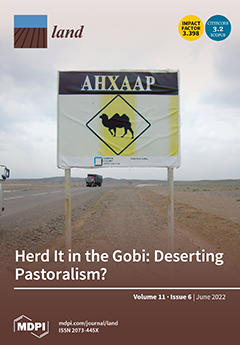South Florida’s agricultural soils are traditionally low in organic matter (OM) and high in carbonate rock fragments. These calcareous soils are inherently nutrient-poor and require management for successful crop production. Sunn hemp (SH,
Crotalaria juncea) and velvet bean (VB,
Mucuna pruriens) are highly productive leguminous cover crops (CCs) that have shown potential to add large quantities of dry biomass to nutrient- and organic-matter-limited systems. This study focuses on intercropping these two CCs with young carambola (
Averrhoa carambola) trees. The objective was to test the effectiveness of green manure crops in providing nutrients and supplementing traditional fertilizer regimes with a sustainable soil-building option. Typically, poultry manure (PM) is the standard fertilizer used in organic or sustainable production in the study area. As such, PM treatments and fallow were included for comparison. The treatments were fallow control (F), fallow with PM (FM), sunn hemp (SH), SH with PM (SHM), velvet bean (VB), and VB with PM (VBM). Sunn hemp and VB were grown for two summer growing seasons. At the end of each 90-day growing period, the CCs were terminated and left on the soil surface to decompose in a no-till fashion. The results suggest that SH treatments produced the greatest amount of dry biomass material ranging from 48 to 71% higher than VB over two growing seasons. As a result, SH CCs also accumulated significantly higher amounts of total carbon (TC) and total nitrogen (TN) within their dry biomass that was added to the soil. Sunn hemp, SHM, and FM treatments showed the greatest accumulation of soil OM, TC, and TN. Soil inorganic N (NH₄⁺ + NO
3− + NO
2) fluctuated throughout the experiment. Our results indicate that generally, VB-treated soils had their highest available N around 2 months post termination, while SH-treated soils exhibited significantly higher N values at CC termination time. Sunn hemp + PM (SHM)treatments had highest soil N availability around 4 months after CC termination. Soil enzyme activity results indicate that at CC termination, SHM exhibited the highest levels of β-1-4- glucosidase and β-N-acetylglucosaminidase among all treatments. Overall, SH, SHM, and FM treatments showed the greatest potential for supplementing soil nutrients and organic matter in a no-till fruit production setting.
Full article





